C-17 Facts: Everything You Need To Know
C-17 Globemaster III Measurements
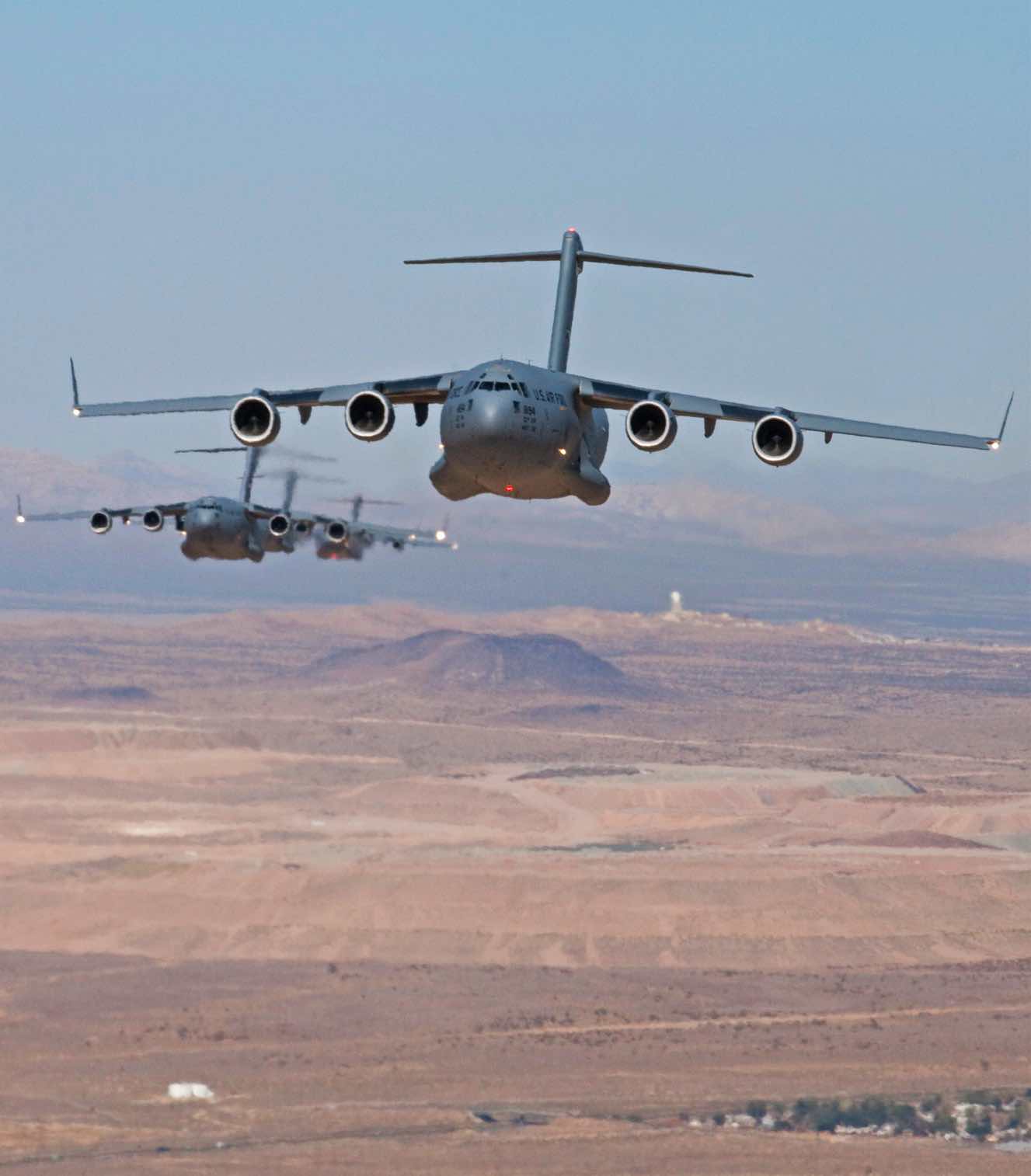
The C-17 measures 174 feet long (53 meters) with a wingspan of 169 feet, 10 inches (51.75 meters). Compared to other transport/cargo aircraft in the U.S. Air Force inventory, like the C-5 and C-130, these specifications place the C-17 Globemaster III right in the middle in size. The C-130 measures 97 feet, nine inches long with a wingspan of 38 feet, 10 inches. The C-5 – the largest of the three – measures 247 feet, 10 inches long with a wingspan of 222 feet, nine inches.
C-17 Engines
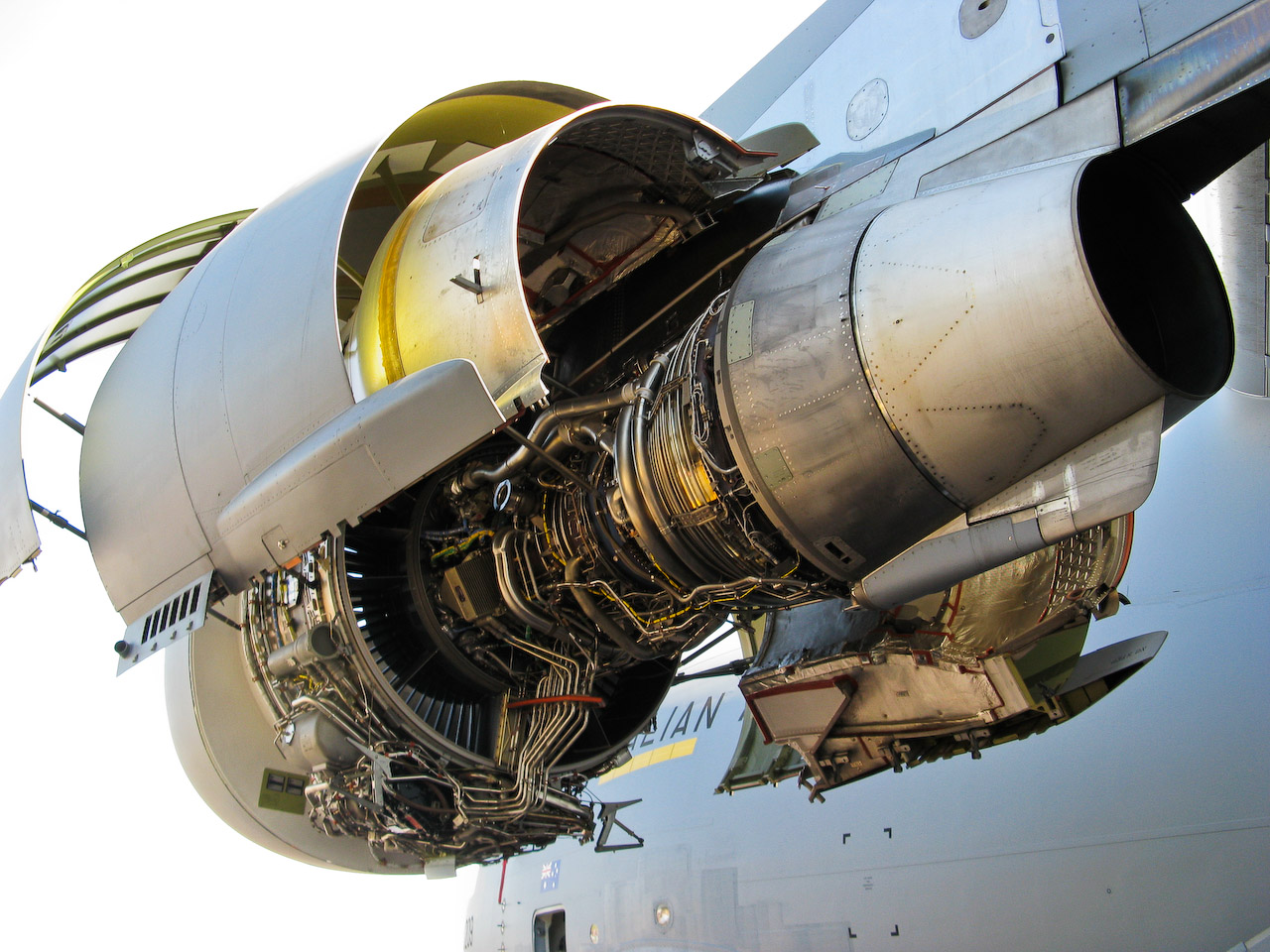
Four Pratt & Whitney F117-PW-100 turbofan engines, which are based on the commercial Pratt and Whitney PW2040 used on the Boeing 757, power a C-17 Globemaster III. Each engine is rated at 40,440 pounds of thrust and includes thrust reversers that direct the flow of air upward and forward to avoid ingestion of dust and debris. The engine weighs 7,100 pounds and measures 146.8 inches long. The inlet diameter of the engine is 78.5 inches, the maximum diameter of the engine is 84.5 inches long, it has a bypass ratio of 5.9 to 1, and a overall pressure ratio of 30.8 to 1.
C-17 Facts: Only 3 Crewmembers
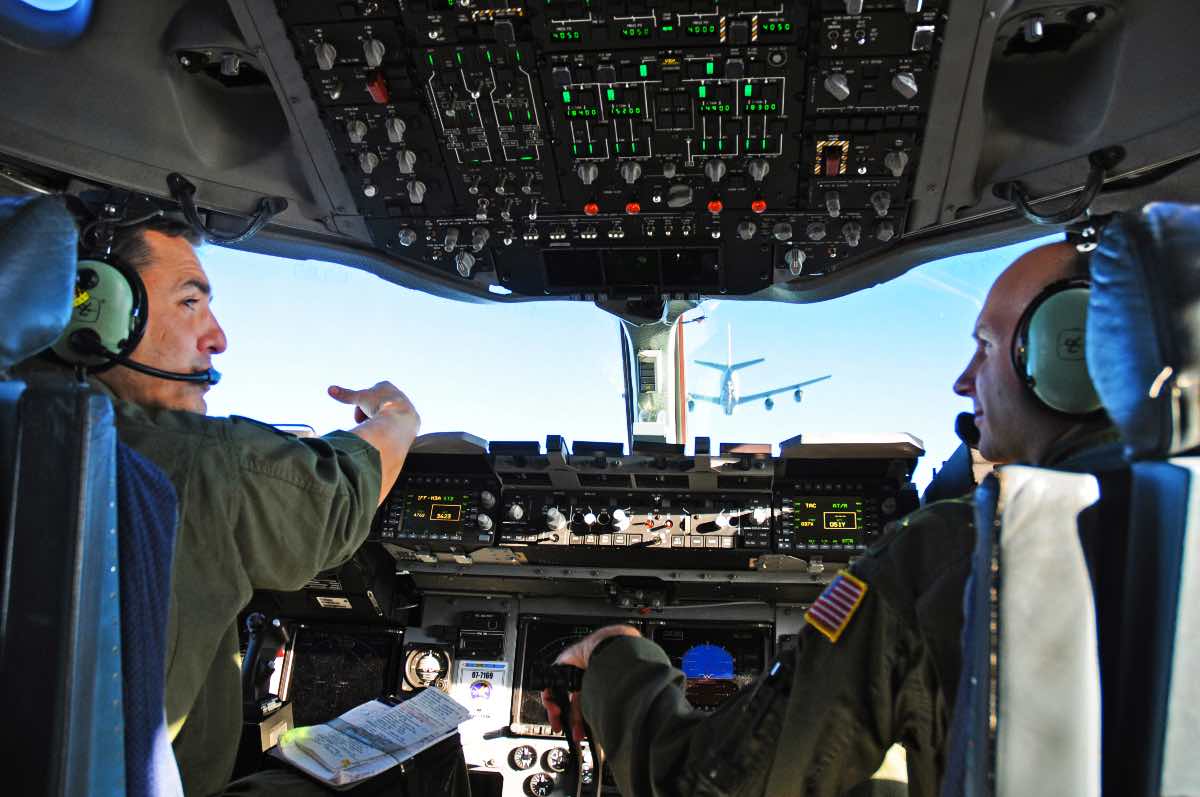
The large aircraft is operated by only a crew of three. The pilot, co-pilot and loadmaster are the three positions necessary to deliver the rapid strategic delivery of troops and all types of cargo to main operating bases or directly to forward bases in the deployment area. Having a crew of three reduces manpower requirements, risk exposure and long-term operating costs. A standard crew of five are added for aeromedical evacuation missions. Medical crew, which include two flight nurses and three medical technicians, may be altered by needs of patients.
Largest Fuel Drop Ever
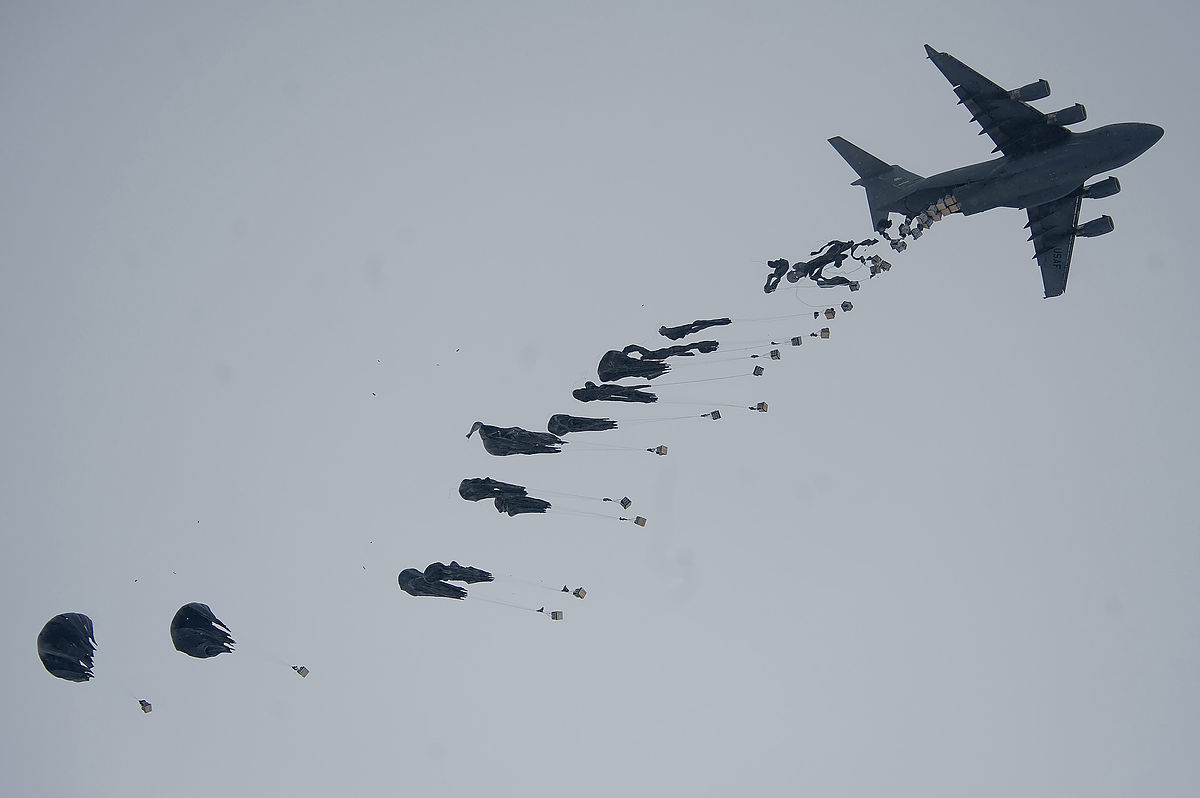
Nearly all of the Army’s air-transportable equipment such as a 69-ton M1 Abrams main battle tank, armored vehicles, trucks and trailers, as well as other cargo, is loaded onto the C-17 through a large aft ramp and door system. Additionally, the cargo floor has rollers that can be flipped from a flat floor, to accommodate wheeled or tracked vehicles, to rollerized conveyers to accommodate palletized cargo. The largest-ever refuel drop occurred recently when a C-17 dropped 120 bundles of fuel to a remote base in the Middle East.
C-17 Payload Capacity
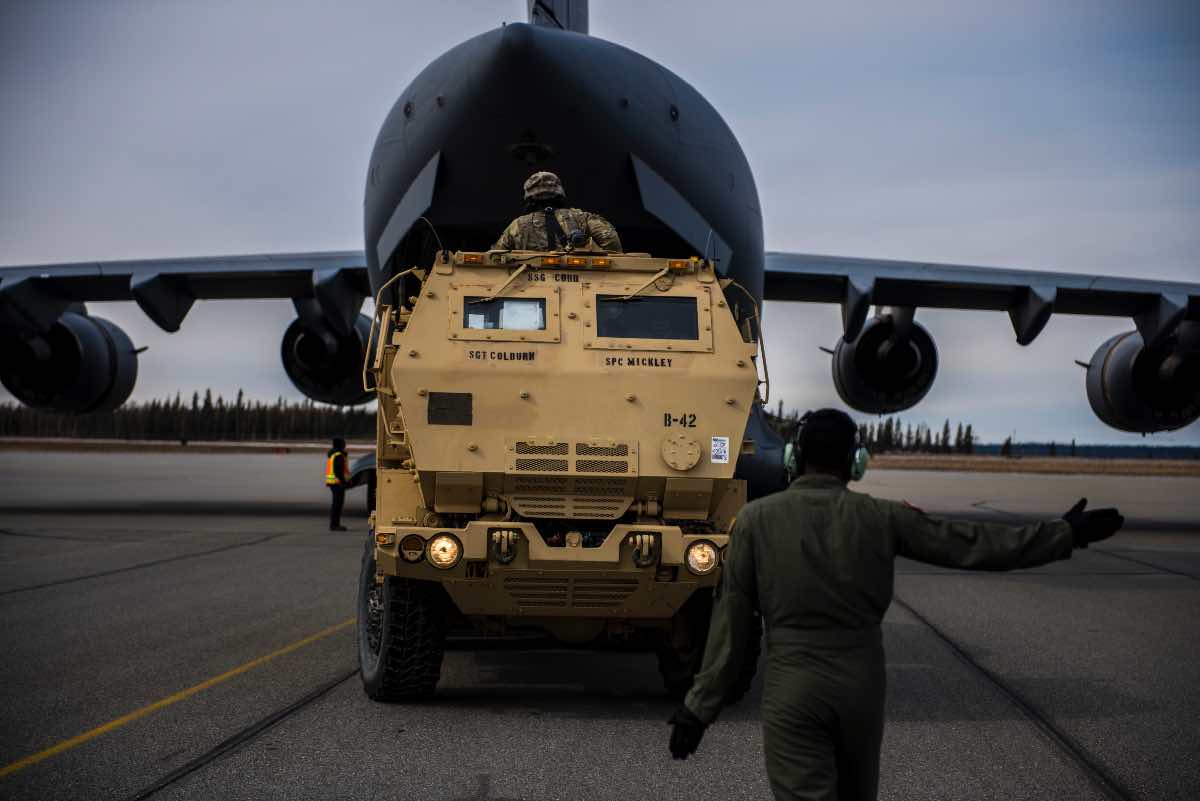
Maximum payload capacity of the C-17 is 172,000 pounds (77,519 kilograms), and its maximum gross takeoff weight is 585,000 pounds (265,352 kilograms). A document by the U.S. General Accounting Office from 1984 stated that data provided by the Air Force and McDonnell Douglas Corporation, the C-17 contractor, show that the C-17 is designed to carry its 172,200 pound maximum cargo load an un-refueled distance of about 2,900 nautical miles. This data also show that the C-17 will be able to land in 2,370 feet with a cargo load of 170,000 pounds.
Landing on Austere Runways
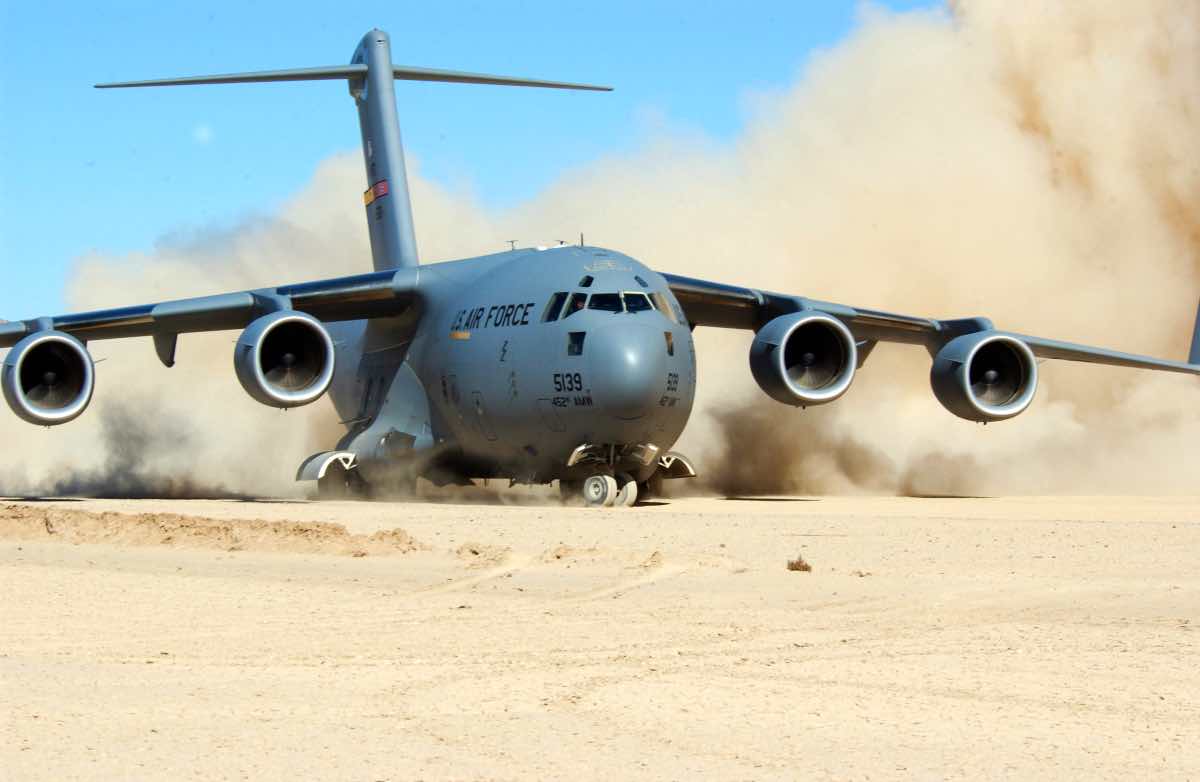

The design of the aircraft allows it to operate through small, austere airfields. High-lift wing, slats, and externally blown flaps allow the C-17 to take off and land on runways from 2,300 to 3,500 feet (1,064 meters) and only 90 feet wide (27.4 meters). Even on such narrow runways, the C-17 can turn around using a three-point star turn and its backing capability. The Air Force desribes an austere runway as, “runways are usually less than 4,000 feet long and can be as narrow as 60 feet. Payloads may be constrained by runway length and weight-bearing capacity. There is less than 100,000 square feet of ramp spaceaccessed by way of a single narrow taxiway and there are no turnaround areas at either end of the runway. Ground support and equipment are usually nonexistent.”
First Flight
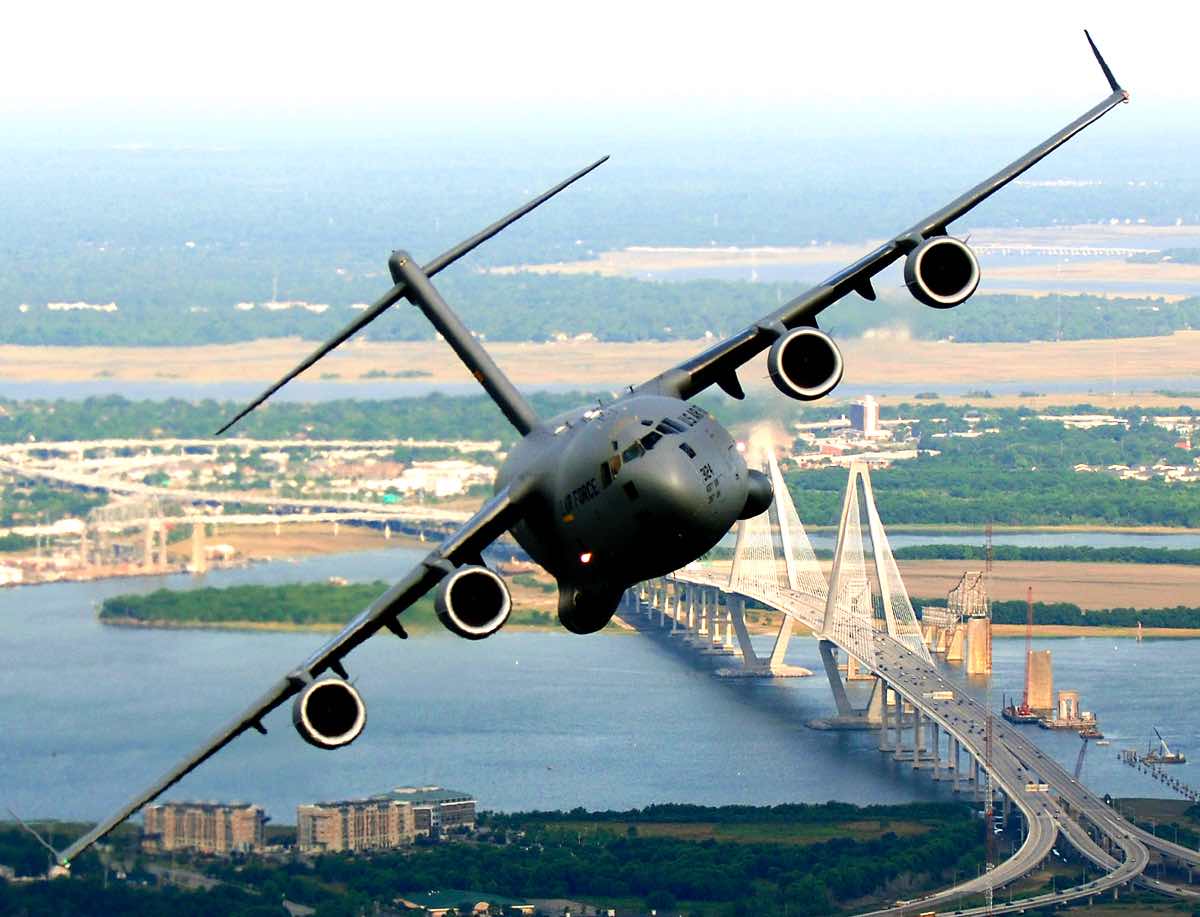
The C-17 made its maiden flight on Sept. 15, 1991, and the first production model was delivered to Charleston Air Force Base, now identified as Joint Base Charleston, S.C., on June 14, 1993. The first flight to Charleston AFB was piloted by then-Air Force chief of staff, Gen. Merrill McPeak. The C-17 program was delivered under controversy about avionics glitches and external/aesthetic mishaps. The entire program was valued at $42 billion in 1993. Charleston Air Force Base joined with Naval Weapons Station Charleston to become Joint Base Charleston in 2010.
C-17 and the 17th Airlift Squadron
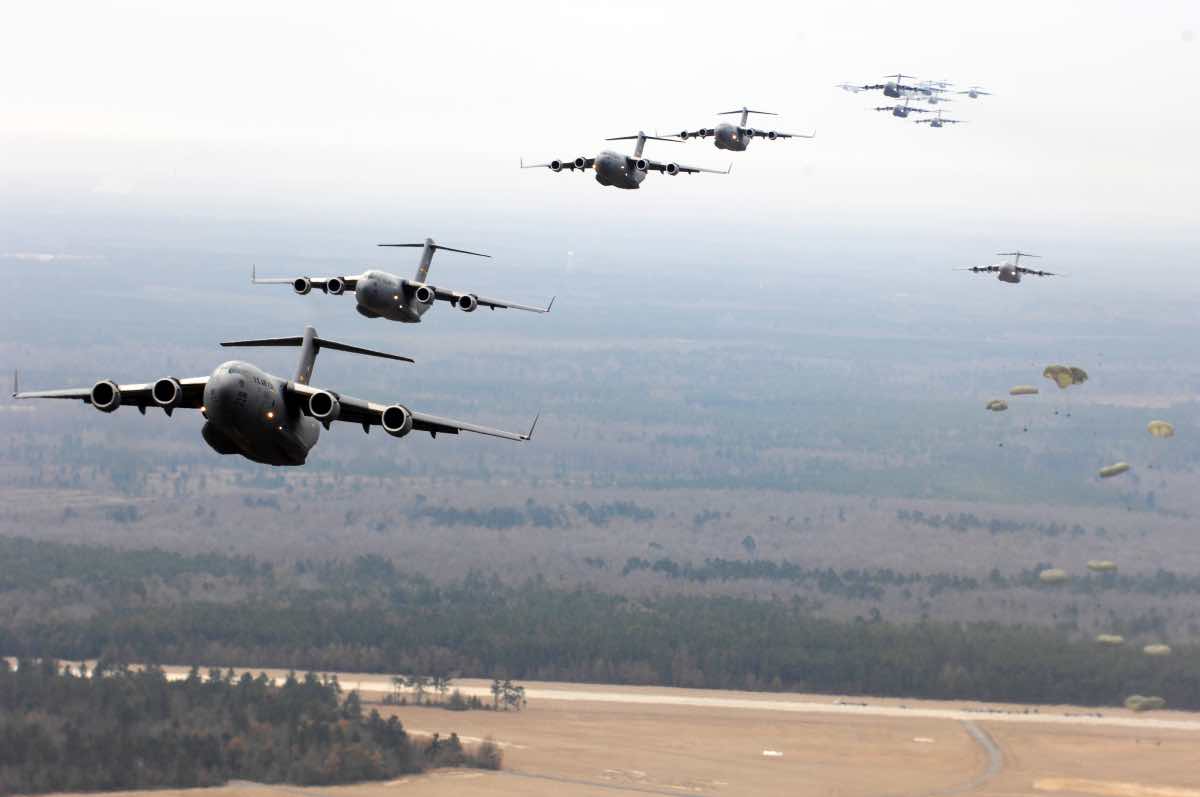
The first squadron of C-17s, the 17th Airlift Squadron, was declared operationally ready Jan. 17, 1995. The Air Force originally entered a contract with McDonnell Douglas to buy 120 C-17s. Despite a rocky beginning, the USAF took note of the unrivaled success of the C-17 to accomplish various mobility missions. Because of this, additional aircraft were acquired, resulting in a final fleet of 223 aircraft. The 17th Airlift Squadron began its existence at Hamilton Field, California in February 1942 as the 17th Air Corps Ferrying Squadron and has since flown a variety of aircraft to include the C-46, C-47, C-54, C-124, C-141 and C-17. Though the aircraft and name of the squadron have changed over the years, the job of the 17th AS has always been air transport.
C-17 Facts: Who Flies Them
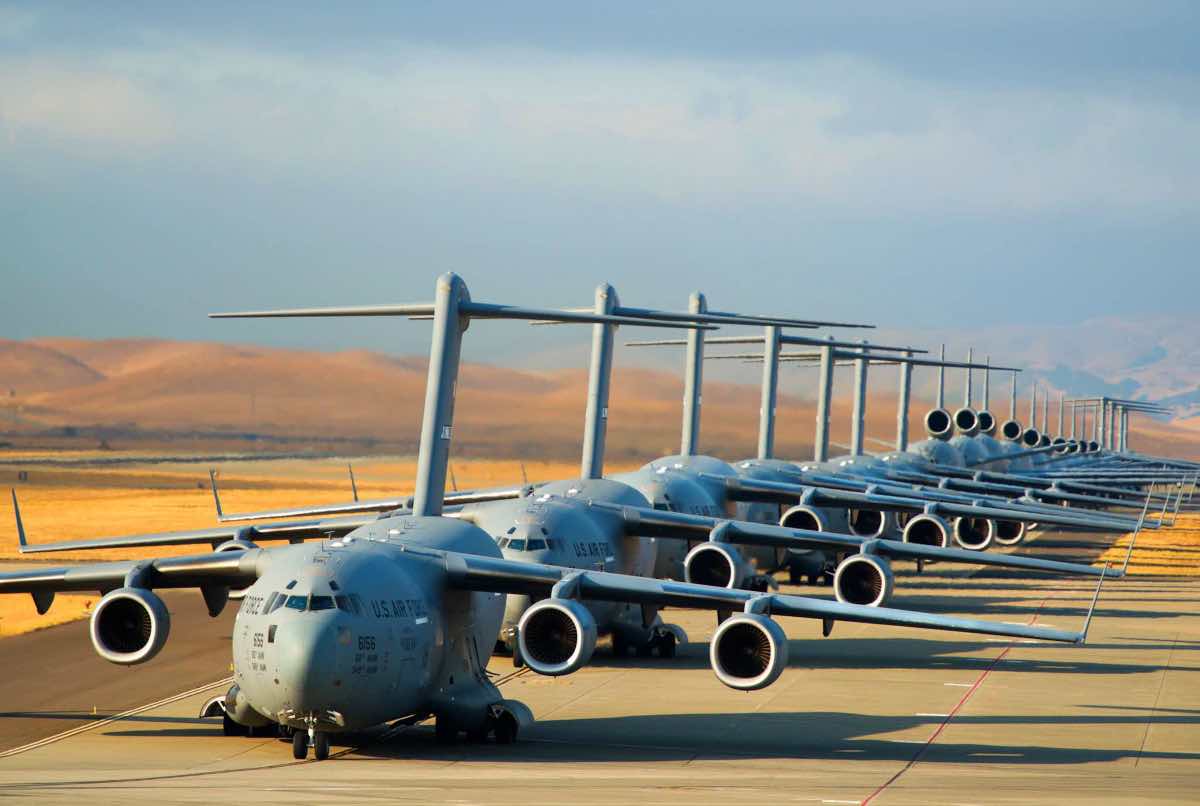
Currently, there are 157 C-17s in Air Force active duty, 47 with the Air National Guard and 18 in the Air Force Reserve. The C-17 is operated by Air Mobility Command from Travis AFB, California, Dover AFB, Delaware, Joint Base Lewis-McChord, Washington, Joint Base Charleston, South Carolina, and Joint Base McGuire-Dix-Lakehurst, New Jersey. Pacific Air Forces operates C-17s from Joint Base Elmendorf-Richardson, Alaska, and Joint Base Pearl Harbor-Hickam, Hawaii. The Air National Guard operates C-17s from Jackson, Mississippi, Stewart ANG Base, New York, Memphis, Tennessee, Martinsburg, West Virginia, and Charlotte, North Carolina. The Air Force Reserve Command operates C-17s at March Air Reserve Base, California, and Wright Patterson AFB, Ohio. Air Force Materiel Command has one C-17 on loan from JB Charleston to conduct tests at Edwards AFB, California. Air Education and Training Command performs C-17 aircrew training from Altus AFB, Oklahoma.
C-17 Cost
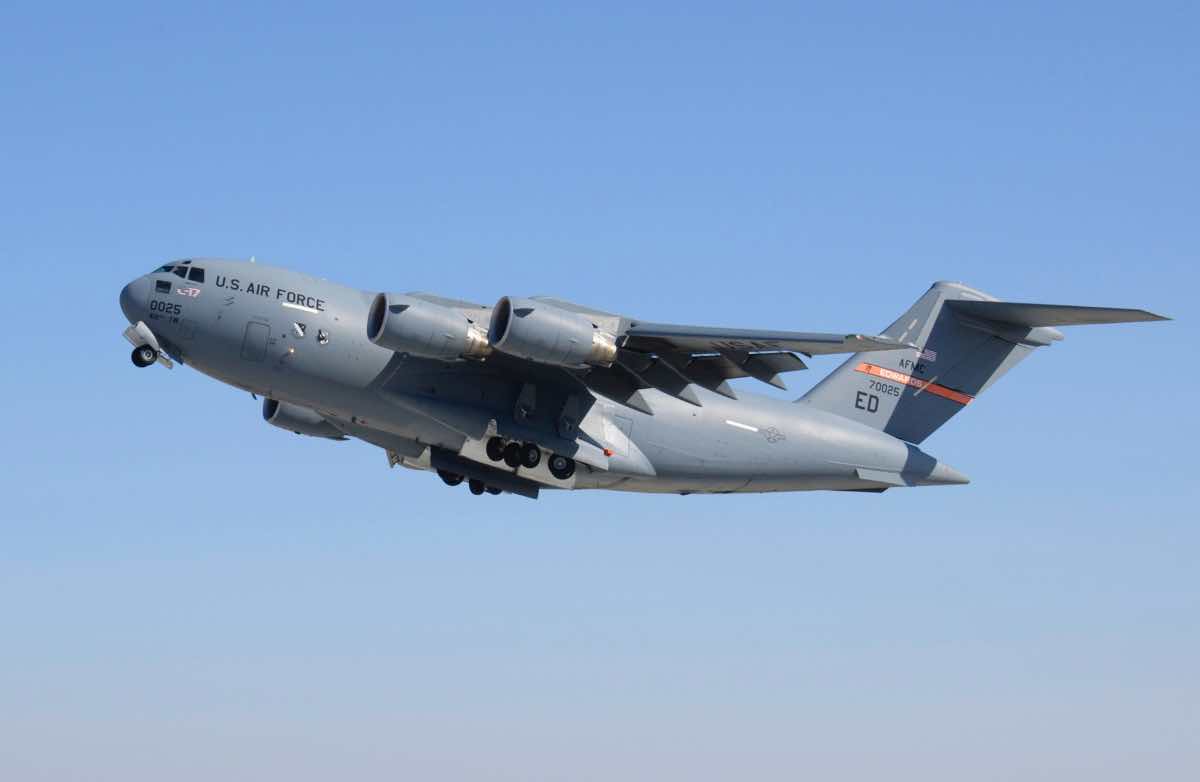
The unit price for one C-17 Globemaster II was $202.3 million (fiscal 1998 constant dollars). That translates to roughly $312.8 million in today’s dollars. The United States recently entered an agreement with India to sell one C-17. The C-17 was outfitted with all of the latest avionics updates and priced at $366.2 million. The cost-per-flight hour of the C-17 is $23,811 which is notably cheaper than the next step up in transport aircraft. The C-5 Galaxy costs $78,817 per flight hour.
C-17s Around The Globe

Truly, a Globemaster. Currently, 274 C-17s operate around the world. The aircraft’s largest customer is the United States Air Force, with 223 in 12 bases. Outside of that, the United Kingdom, Australia, Canada, Kuwait, Qatar, the United Arab Emirates, India and the 12-nation Strategic Airlift Capability all operate the C-17 Globemaster III. It has played an integral role in global strategic airlift and significant delivery of humanitarian aid. C-17 support for relief efforts includes Pakistan, Haiti, Chile, China, Myanmar, and Thailand and is the primary airlifter for military operations around the world.
Transporting Vehicles in the C-17 Globemaster III
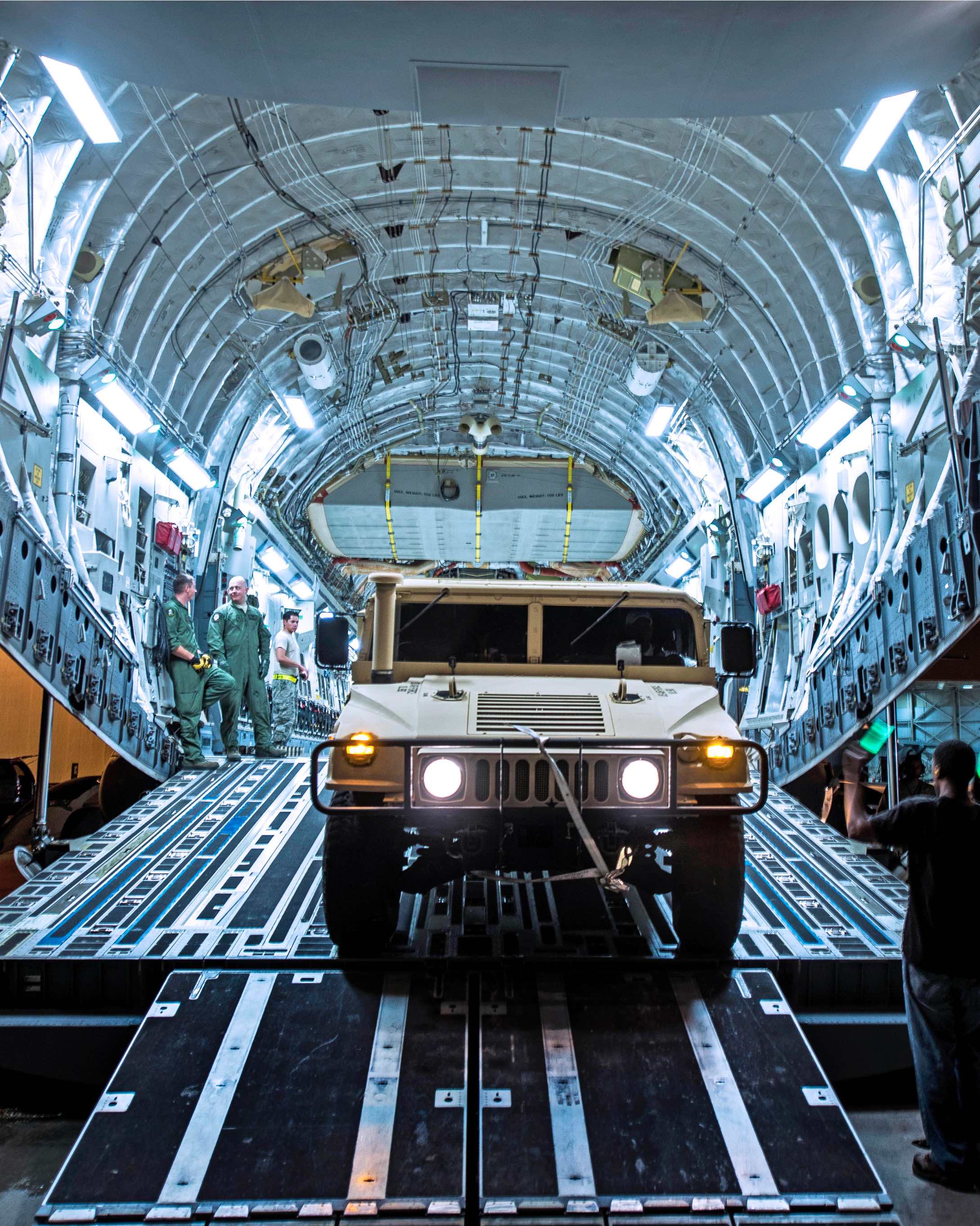
The C-17 Globemaster III can carry a cargo of wheeled U.S. Army vehicles in two side-by-side rows. A wide array of vehicles can be carried in various scenarios. The heaviest and most impressive is the U.S. Army’s main battle tank, the M-1 Abrams. The M-1 Abrams battle tank weighs roughly 120,000 pounds – only one can be situated in the C-17 but other wheeled vehicles can be fit around the tank as well. If there’s no tank onboard, three Bradley Fighting Vehicles fit in the cargo bay of the C-17.
C-17 Airdrop
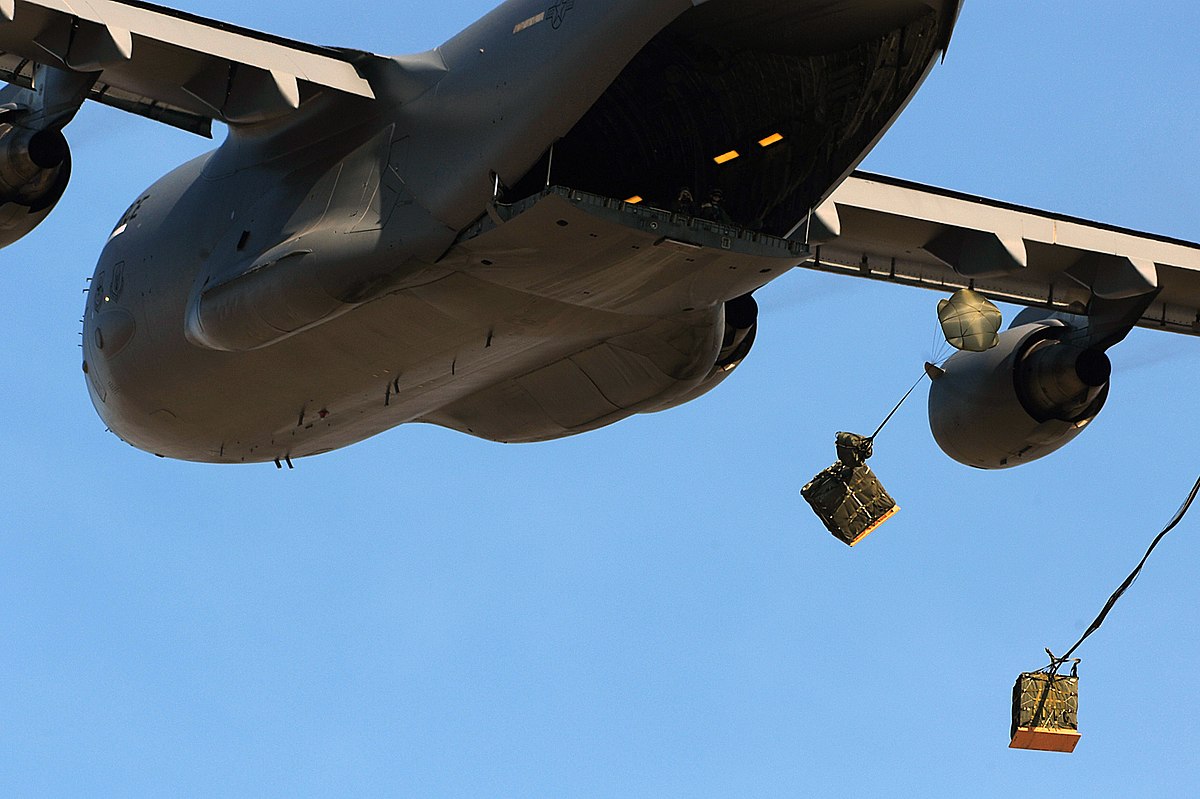
Airdrops are one of the primary features the C-17 was designed for. The C-17 can drop a single 60,000-pound payload, with sequential load drops of 110,000 pounds. The Loadmaster is in charge of loading and balancing the cargo properly. An airdrop is usually a coordinated effort between the Air Force and the Army. “The airdrop represents a very significant mission — delivering needed supplies while reducing the burden and risk on our Army helicopter and maintenance crews,” said Army Chief Warrant Officer 2 David Beville, 3rd Infantry Division Resolute Support Sustainment Brigade.
The C-17 Can Go in Reverse
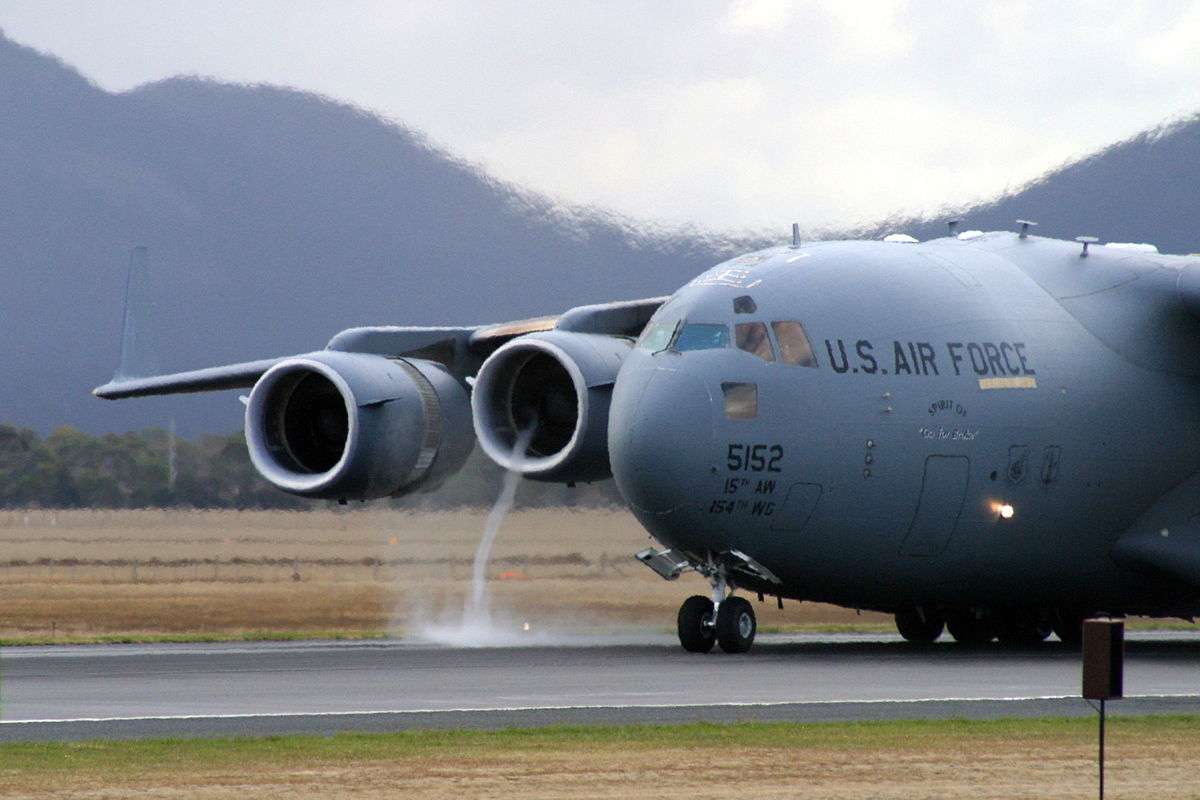
Thrust reversers. One of the coolest C-17 facts is that each engine is rated at 40,440 pounds of thrust and includes thrust reversers that direct the flow of air upward and forward to avoid ingestion of dust and debris. A fully-loaded aircraft on the ground can employ its thrust reversers and back up a 2-percent slope. For an aircraft as massive as the C-17, that’s impressive. The C-17 thrust-reversers also aid in a quick turn around on a limited runway using a three-point turn.
C-17 Facts: Troop Capacity
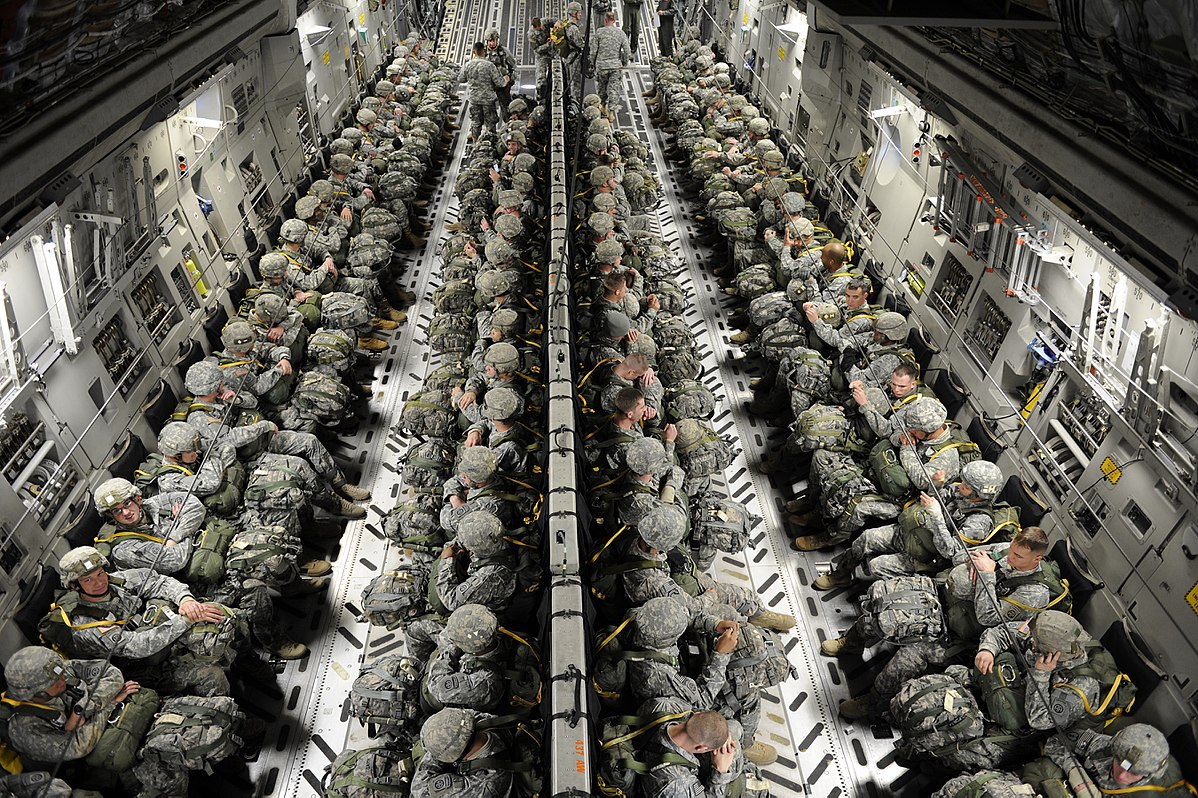
Tanks, vehicles and cargo aren’t the only things the C-17 Globemaster III was designed to carry. Delivering a load capacity of troops are paramount to the success of the military in question. The C-17 seats 54 soldiers on the sidewall and 48 in the centerline. 27 soldiers on each side of the sidewall, with an 18-inch seat. The centerline seats 48 soldiers in eight sets of six back-to-back seats. Or instead of the centerline, a C-17 can sit 80 soldiers on eight pallets in addition to the sidewall, for a maximum troop capacity of 134.
Back in Action
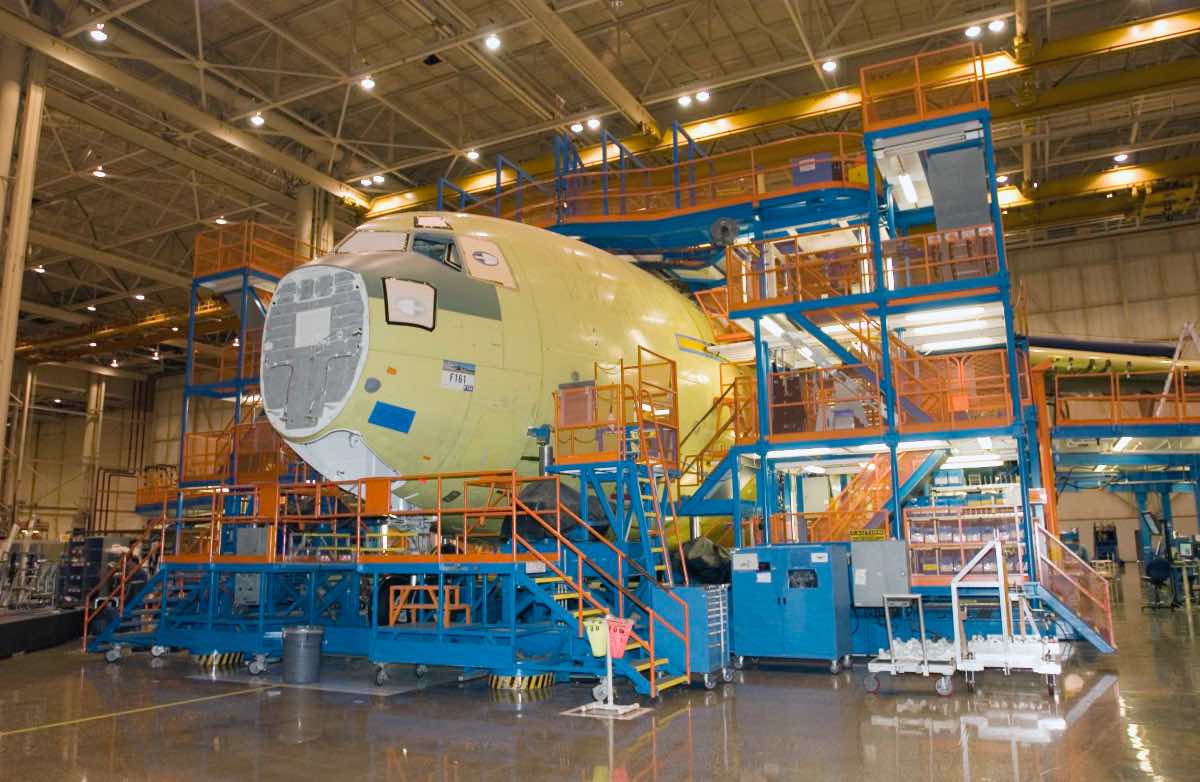
In 2015, inside Boeing’s Long Beach manufacturing facility, C-17 employees pieced together the nose, center fuselage, wings, and tail for the last time. Or so they thought. Boeing, which absorbed McDonnell Douglas after the C-17 was designed and built, now runs the C-17 program. Plane 279 marked the final, “major join,” of the C-17, and was the final plane to come off the assembly line. However, the United States recently entered an agreement to sell one C-17 Globemaster III to India. This means the Boeing manufacturing plant will pump out at least one more C-17.
C-17 Wings
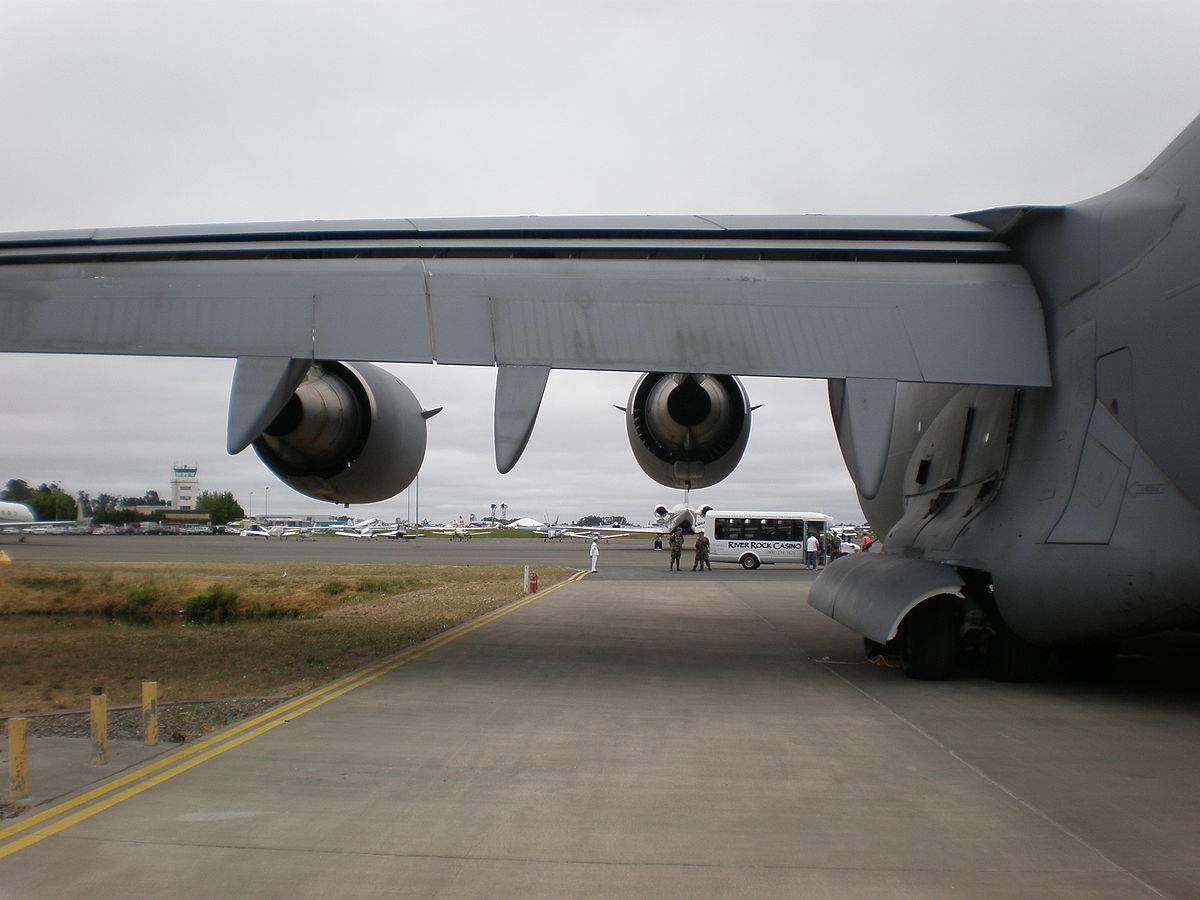
Landing on remote, unprepared runways is a difficult task. One of the main benefactors allowing the C-17 Globemaster III the ability to do so is its wings. The wings of the C-17 wings amass a total 3,800 sq ft. They contain a 7.165 aspect ratio, 35 degree sweep angle, and supercritical airfoil. It’s wing flaps are fixed-vane, double-slotted, and simple-hinged. A ‘supercritical’ wing is an advanced airfoil design that enhances the range, cruising speed and fuel efficiency of jet aircraft by producing weaker shock waves that create less drag and permit high efficiency.
C-17 Horizontal ‘T-tail’ Wing
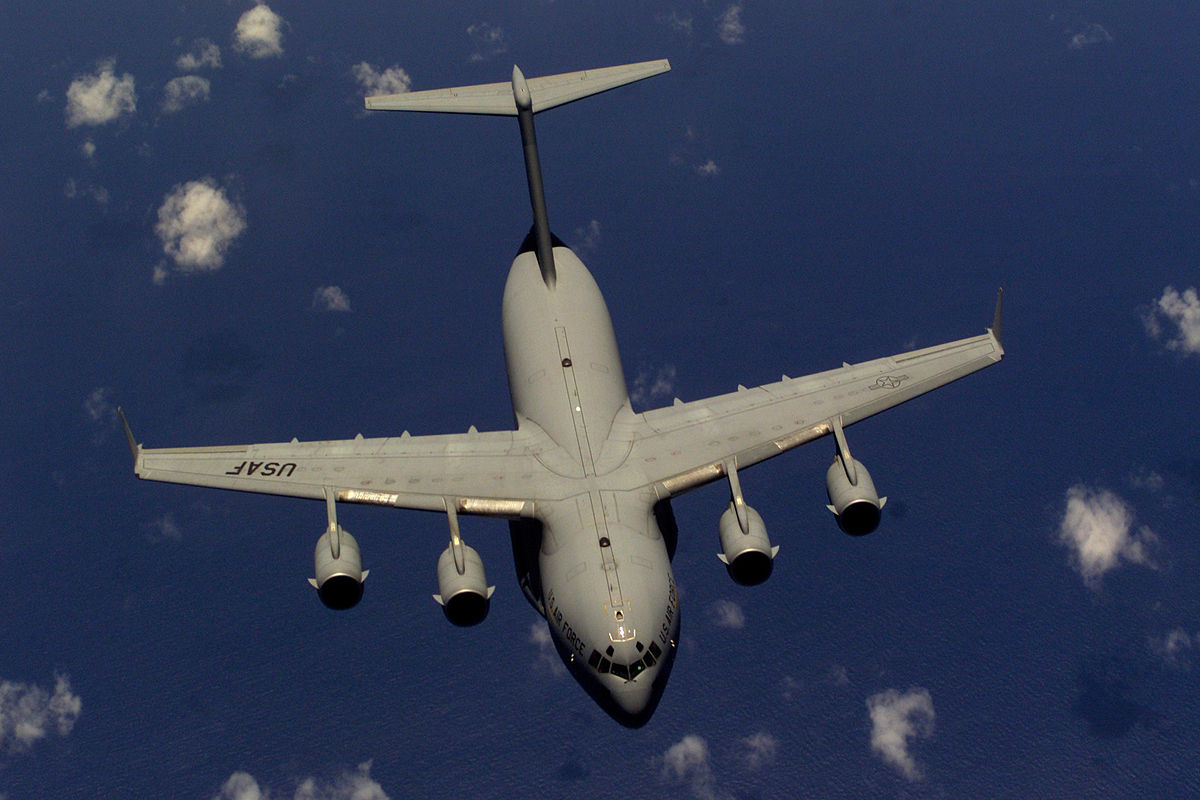
The horizontal ‘T-tail’ on the C-17 is used to avoid large downwash from high-lift system. The horizontal tail has a total area of 845 sq ft. It’s 65 feet wingspan gives it a 5.0 aspect ratio and it has a 27-degree sweep. The first 50 C-17s had horizontal tails that were made of metal. But in the late-1990s, Boeing transitioned it to a composite tail. All C-17 aircraft from No. 51 on contain the lighter, less expensive horizontal tail. It has 2,000 fewer parts and 42,000 fewer fasteners than the metal unit, and weighs about 500 pounds less – approximately a 20 percent weight reduction.
C-17 Cockpit

The Instrument Display in the C-17 cockpit is outfitted with 2 full-time all-function head-up displays (HUD) and 4 multi-function active matrix liquid crystal displays. The C-17 Globemaster III flight controls system maintains a quadruple-redundant electronic flight control with mechanical backup system. A recent upgrade to the C-17 avionics includes new mission displays and computers as well as new software for the warning and caution system. The new software is courtesy of Northrop Grumman Navigation Systems.
C-17 Facts: Humanitarian History
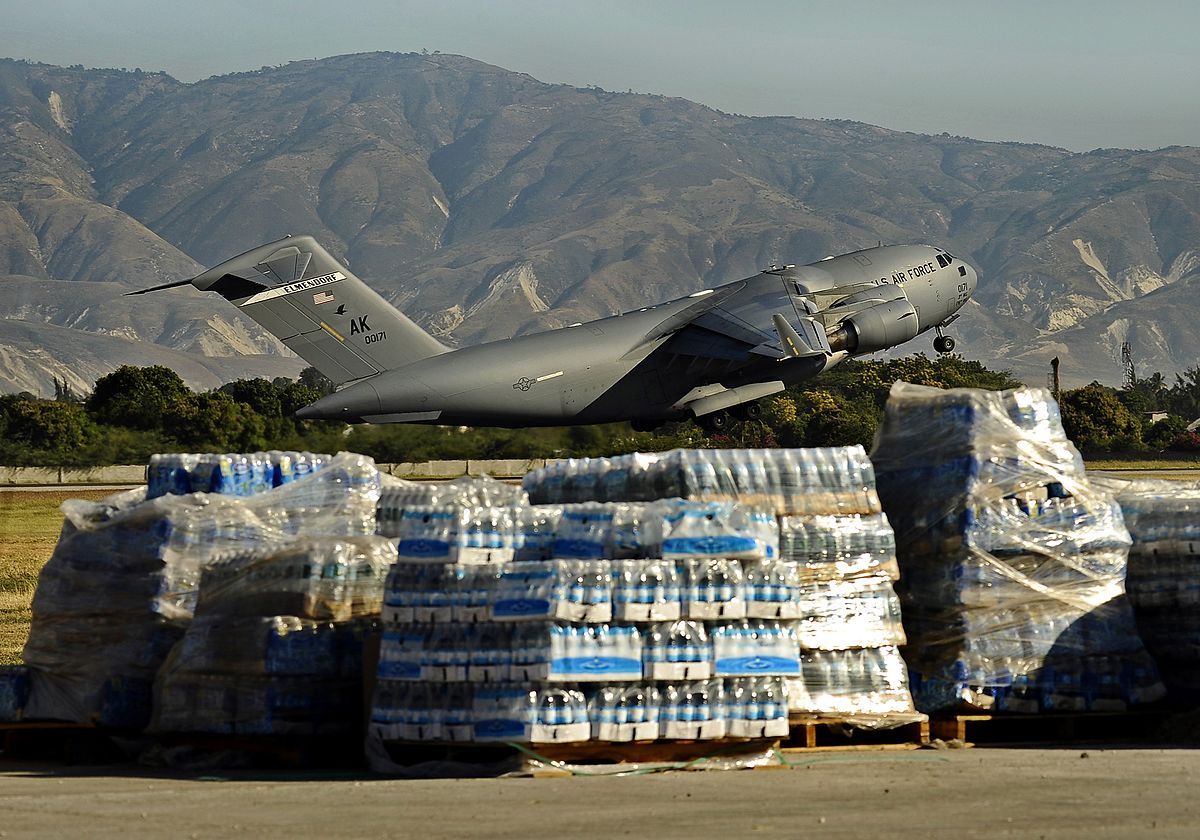
Every major worldwide operation since the 1990s. That’s how often the C-17 has dropped cargo or assisted other branches of the military. The C-17 Globemaster III has an illustrious history of both combat performance as well as humanitarian aid. In recent years the C-17 played an integral role in aiding Puerto Rico after massive flooding, in Yemen delivering food and supplies to refugees, in Haiti delivering relief supplies, and even delivering a fire truck to emergency responders in Guatemala.
Thanks for browsing through our C-17 Facts, we’ll think you’ll enjoy these facts about the F-22!

